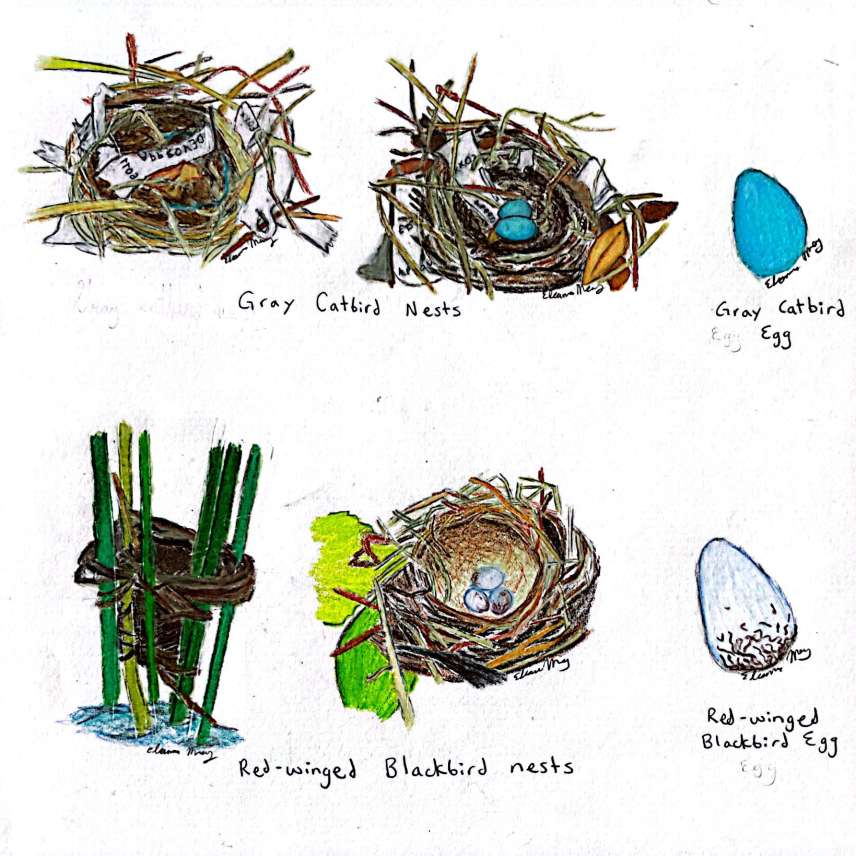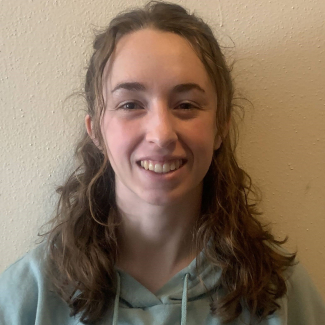One person's trash is another bird's building material
During the fall of 2022, researchers at the St. Jones Reserve, a component of the Delaware National Estuarine Research Reserve, observed trash in songbird nests around the reserve’s visitor center. This past summer, Hollings scholar Eleanor Meng studied whether this trash occurred more frequently in nests near the visitor center compared to nests further away.
Eleanor Meng, a 2022 Hollings scholar, studied whether songbirds incorporated trash in their nests more often the closer they nested to the visitor's center of a nature reserve. Here, she is searching for bird nests in a shrub at the St. Jones Reserve, a region of Delaware National Estuarine Research Reserve. (Image credit: Abby Reed)
Eleanor spent three weeks searching for nests across the reserve. She documented whether the nests had trash present and their locations. She mapped and analyzed the data to determine whether the presence of trash in the nest was related to its distance from the reserve’s visitor center.
Out of the 59 nests she found, 34% contained some type of trash, mostly plastic-based. She also discovered that nest distance from the visitor center did influence whether trash was present or not. Of the nests with trash, 70% were within 100 meters of the reserve’s visitor center. She also noticed that some birds used trash, while others never used it. For instance, gray catbirds appeared to favor using trash while red-winged blackbirds never used trash, even when close to the visitor center. The presence of trash in bird nests can be used as an environmental indicator to signal that despite the reserve’s large natural landscape, trash is still present in the environment.
As part of the education side to her internship, Eleanor created a tri-fold brochure to communicate the results of this study to the public. This brochure is currently available to the public at both Delaware National Estuarine Research Reserve visitor centers. After completing the brochure, she wanted to add an artistic touch by incorporating her illustrations of some of the nests she found. She was captivated by the bird nests she found this summer and the ingenious ways the birds were able to weave their nests together, either with natural material or trash. Eleanor plans to continue drawing nests from the reference photos she took and hopes to include these drawings in her biology senior capstone project which will focus around the work she did this summer.


Eleanor Meng is a 2022 Hollings scholar and biology major at Lawrence University.



